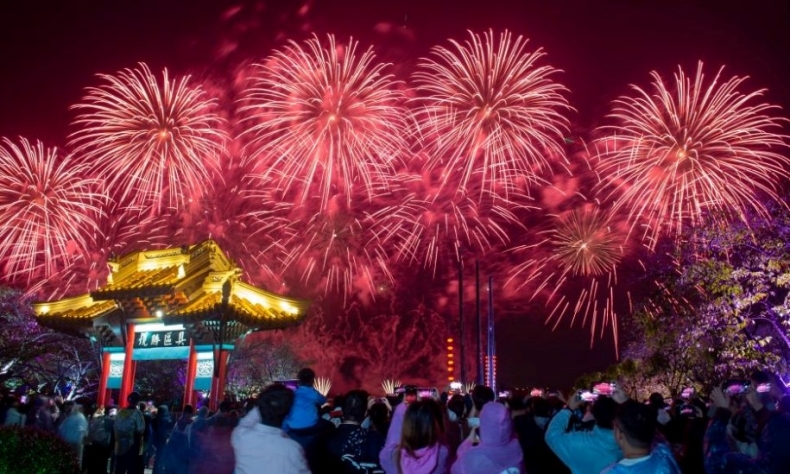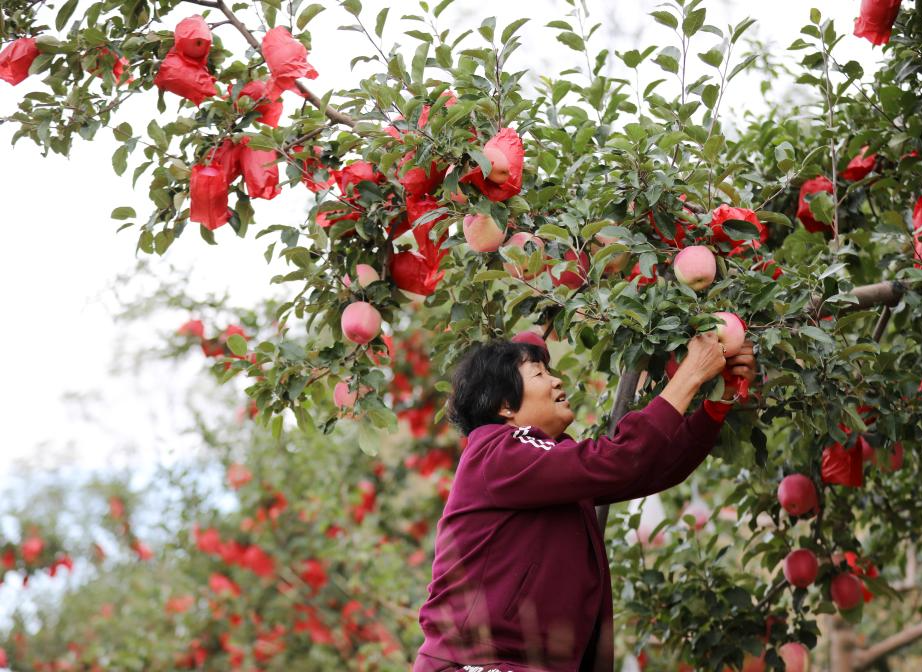Modernization, the Chinese Way

China pursues a form of modernization that doesn’t benefit only itself, but the whole world.
As the People’s Republic of China (PRC) celebrated its 75th founding anniversary on October 1, President Xi Jinping said on the journey ahead, the central task is to build China into a strong country and advance national rejuvenation on all fronts through Chinese modernization.
Chinese modernization, as Xi indicated in 2021 at the centenary of the Communist Party of China (CPC), is a modernization of a huge population, and entails ensuring common prosperity, and material and cultural-ethical advancement. It also means harmony between humanity and nature, and peaceful development. While it shares common elements with the modernization processes of other countries, Chinese modernization has its own distinct features that are based on China’s own realities.
New form of progress
In his report to the 20th CPC National Congress the following year, Xi gave more details about the essential requirements of Chinese modernization. They include upholding the leadership of the CPC and socialism with Chinese characteristics, pursuing high-quality growth, and developing whole-process people’s democracy. The other yardsticks also include enriching people’s cultural lives, building a human community with a shared future, and creating a new form of human advancement.
The pursuit of Chinese modernization has transformed a poor country into the second-largest economy in the world with growing national strength and international influence.
According to reports on China’s economic and social development over the past 75 years released by the National Bureau of Statistics of China, from 1952 to 2023, China’s GDP increased from RMB 67.9 billion to RMB 126 trillion. In constant prices, the GDP grew 223 times, with an average annual growth rate of 7.9 percent.
In 2023, Chinese per capita disposable income reached RMB 39,218, representing a real increase of 76 times compared to 1949 after adjusting for price factors, with an average annual growth rate of 6.0 percent. By early this year, more than 95 percent of Chinese population are covered by health insurance. All this data shows how Chinese modernization has delivered tangible benefits. Xi said, “After 75 years of strenuous efforts, Chinese modernization has unfolded a magnificent picture and presented a brilliantly promising future.”
At the heart of Chinese modernization are the people. Xi has often stressed that to advance Chinese modernization, it is imperative to have a people-centered approach, act for the people and rely on the people in everything that is done, and work to ensure that the achievements of reform and development are shared by all through collective efforts.

Life lessons from Gansu
The Tao River is a tributary of the Yellow River, originating in the Gansu-Qinghai border in northwest China. Yet despite its volume, the region suffered from acute water scarcity. In 2006, the Tao River Water Diversion Project was launched to provide 550 million cubic meters of water from the Tao to central Gansu every year. In February 2013, Xi visited the project site and stressed the importance of water management. “We must respect science, make prudent decisions, and carry out careful construction to ensure that this dream project, which benefits millions of people in Gansu, is executed well, allowing the public to drink clean and sweet water from the Tao River as soon as possible,” he said.
Then in September 2024, he toured Gansu once again and was briefed on the progress of the project. He was told it is providing water to nearly six million people, almost a quarter of the province’s population. Lauding the project, Xi said, “We should focus on more projects like this that benefit the people and effectively address the production and living issues faced by the people.”
During the same inspection tour, Xi also visited a Huaniu apple production base, a renowned specialty apple. The base has about 10,000 hectares of orchards that produced 220,000 tons of fruit in 2023, valued at around RMB 600 million. Twenty-five villages run the orchards and their per capita income is over RMB 8,000 annually. A local told Xi she gets a daily pay of RMB 110 and can earn over RMB 30,000 a year.
After learning about the planting techniques, sales and management methods, Xi emphasized the importance of optimizing the cultivation of this variety and innovating marketing models to expand this specialty industry and with it, more people’s incomes.
Xi has said that the immutable goal of Chinese modernization is to deliver a better life to more than 1.4 billion Chinese and the two examples in Gansu show how Chinese modernization is ensuring and improving people’s livelihood.
A peace-oriented modernization
A peaceful environment is a requisite for modernization efforts. Five years ago, on the 70th founding anniversary of the PRC, Xi had pledged, “We will hold high the banner of peace, development, cooperation and mutual benefit, and keep firmly to the path of peaceful development.”
This year too he stressed the role of peace: “To promote Chinese modernization, we must always follow a path of peaceful development,” calling for peace, development, cooperation, and mutual benefit, to promote the common progress of humanity.
To promote world peace, development, and mutual understanding and learning, China has proposed the Global Development Initiative, the Global Security Initiative, and the Global Civilization Initiative, sharing the experience of Chinese modernization.
Recently, Pakistani Prime Minister Shehbaz Sharif told reporters that China’s modernization has made tremendous achievements and China’s development model was a role model “for all of us.” He said the global initiatives proposed by China focus on enhancing peace and development and promoting mutual understanding among people. Recently, under China’s mediation, 14 Palestinian factions held reconciliation talks in Beijing, which demonstrated China’s role in promoting peace and development.
According to Xi, China pursues a form of modernization that doesn’t benefit only itself, but the whole world, where China collaborates with other countries to achieve peaceful development, mutually beneficial cooperation, and shared prosperity. As the PRC turns 75, a mature Chinese modernization is expected to achieve more.
 Facebook
Facebook
 Twitter
Twitter
 Linkedin
Linkedin
 Google +
Google +










